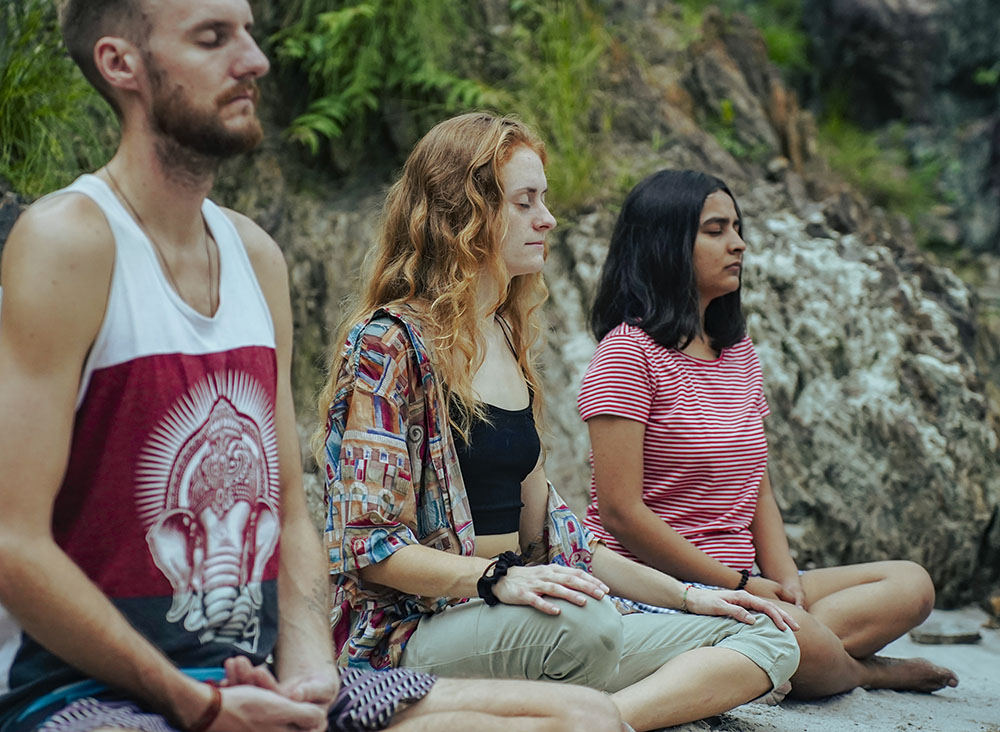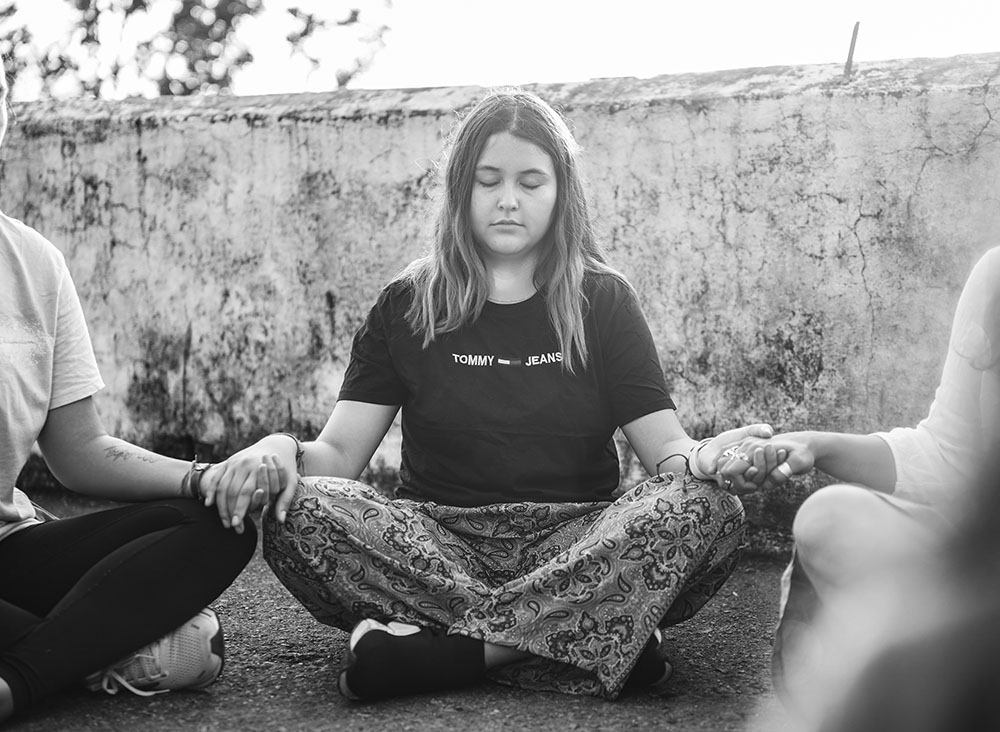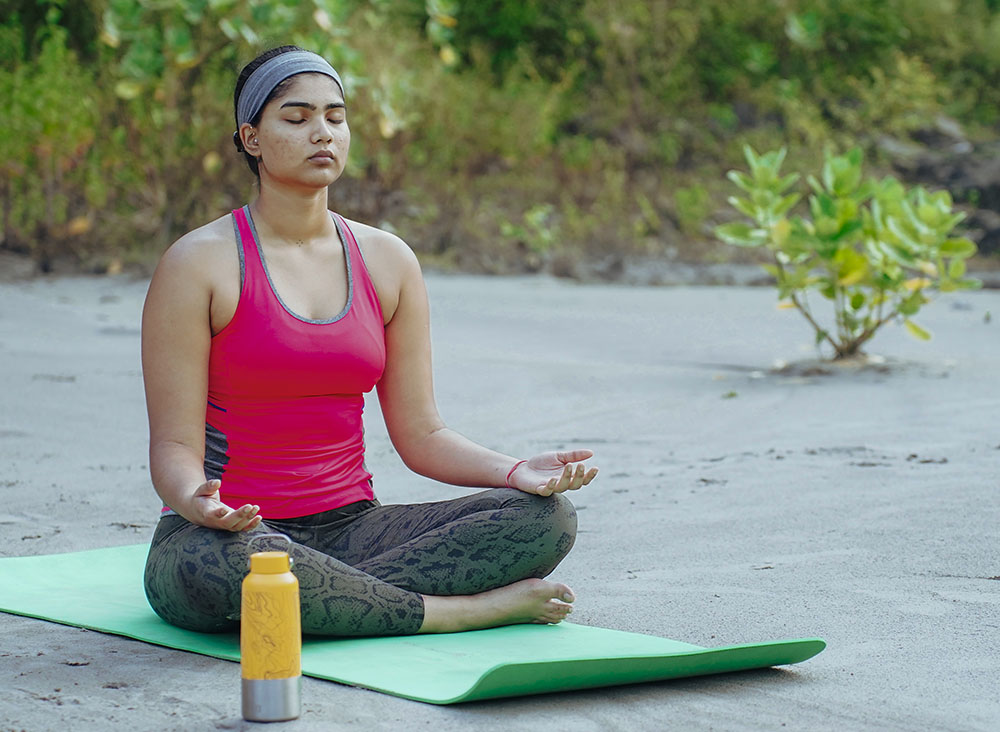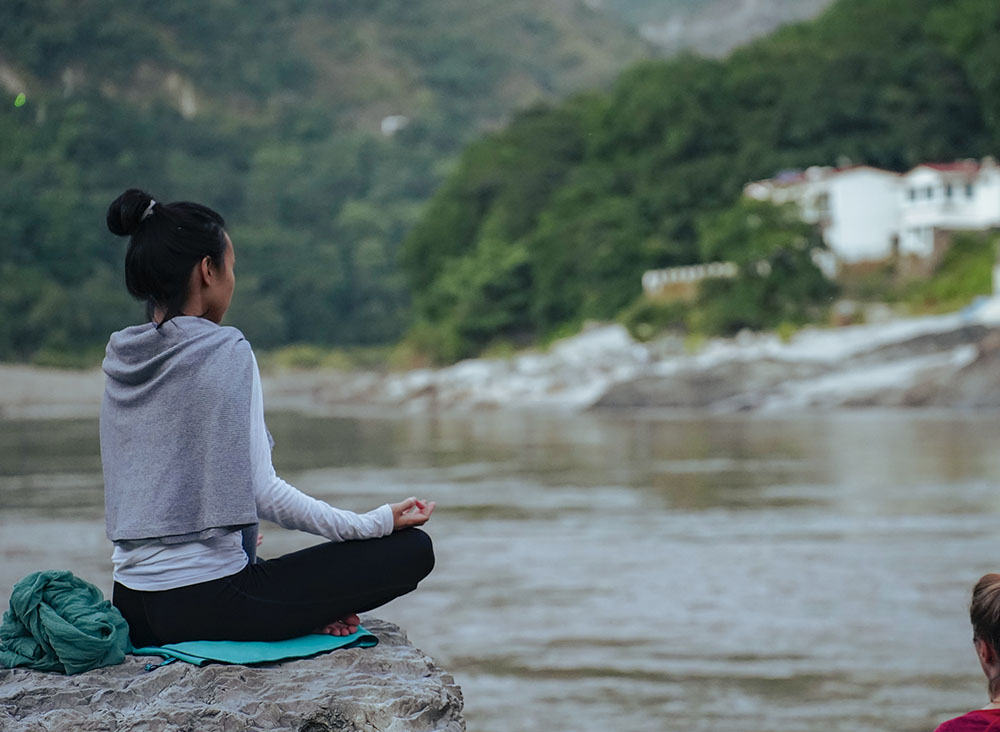Home » Yoga Blog » What is Meditation?
Meditation: How to do, Types & Benefits of Meditation
We love to surround ourselves with people giving out love, joy, and positivity, but how do you feel in your own company? What makes your company is your thoughts. The quality of your thoughts determines the quality of your mental health and vice versa.
In recent times, one good thing that has happened is the realization of the importance of maintaining not only your physical but mental, psychological, and emotional health as well. There is no need to explain the importance of mental health during these times when stress and anxiety have become a part of our daily lives. We are so invested in the external world that we seldom address our inner dimensions. We crave happiness coming from these external sources without realizing that the emotions that we experience are generated from within. This gets us stuck in a never-ending loop of desires and expectations which further leads to disappointment and stress. True bliss comes from a deeper understanding of the self, the body, and the mind. There are so many ways out there by which you can achieve this state of mental well being but our favorite is meditation.
What is Meditation?
Our mind can be our best friend or our worst enemy. If we become a slave of our mind, we are on a path of endless suffering, but once we become a master of it, the same mind becomes a great medium through which we can reach the highest possible potential of our being. Through meditation, we aim to bring the mind under control to direct it in a way that liberates us from the cycle of stress and worry and channelizes our energy into realizing our truest nature, which is ultimate bliss.
As humans, we need language to communicate and exchange ideas and describe experiences but words and language in general, sometimes, is not enough to describe something which is so subjective to everyone and yet so profound and meditation is one such experience.
According to Patanjali, Meditation or Dhyana is the seventh limb of Ashtanga Yoga and is the gateway to liberation. It can be described as a state of ‘thoughtless awareness’ with minimal activity of the mind without reducing the level of alertness. It is properly defined by the Sanskrit school of philosophy as ‘Dhyanam Nirvishayam Manah’ (Sankhya sutra, 6/25), which can be translated into English as “ the liberation of the mind” from all distracting and disturbing emotions, thoughts and desires.”
Meditation occurs when the consciousness becomes continuous with uninterrupted focus during concentration. It is often confused as thinking or contemplating but is far beyond that as meditation, is a very precise and subtle approach through which one becomes fully aware of the self, focusing on understanding the internal dimensions of the body, breath, mind, and soul.
Importance and Benefits of Meditation
According to Swami Rama, through meditation, the aspirant gains confidence, inspiration, and clarity of mind. It helps drive out pride, lust, ill-will, doubt, fears, and discontentment. One starts understanding the transitory nature of all things.
Mediation is shown to have an immense impact on physiological as well as psychological aspects and is a great tool for spiritual upliftment. Practitioners of mediation experience greater emotional balance, concentration, stability, and better holistic health.
It's difficult to pen down the innumerable benefits of meditation but the following are the most important ones :
- Helps you with self-realization and gives you inner peace
- Increases awareness and consciousness of the present.
- Liberates mind from Tridukhas; Adidaivik(suffering coming from nature),Adibhautik(suffering caused by others), and Adhyatmik(suffering caused by the self)
- Helps overcome negative emotions like anger, fear, envy, hatred, greed, etc
- Develops positive emotions in you like love, compassion, gratitude, forgiveness, etc.
- Controls the pattern of mind and prepares the self to reach a higher state of consciousness
- Improves cardiac and respiratory health, and enhances the overall immune system.
- Improves quality of sleep
- Better attention and focus
- Reduced menstrual disorders
- Deeper level of relaxation
- Increases the quality of thoughts
- Lowers oxygen consumption
- Reduces anxiety attacks by lowering blood lactate levels.
- Boosts self-confidence, etc.
Types of meditation
The most commonly practiced meditation techniques are:
Mindfulness Meditation
Mindfulness is the fundamental human ability to be consciously aware of the surroundings and the body, the breath, thoughts, etc. To be conscious of our environment, our actions, and experiences of our senses, emotions, or state of mind. It helps in slowing down racing thoughts, calming our mind and body, and letting go of negativity. The goal is to observe the object of awareness without getting involved. Yoga has always emphasized the significance of consciousness and awareness for spiritual practices.
Aum Chanting
Aum is the mother of all the sound from which sense universe has been projected. The world exists in Aum and dissolves in AUM. “A” represents the physical plane, “U”, the mental and astral planes, while “M” represents the deep sleep state, and all that is beyond the reach of the intellect. In this meditation technique, Aum is recited as a mantra. A mantra is a set of verbal sounds that have inherent sound power and can induce a specific psychological or physical effect. The power of a mantra lies in its ability to produce an objective perceptible change in the yogi when repeated correctly, the mantra has the ability to produce perceptible changes. Chanting of Aum helps realize the inner joy and eternal peace.
Yoga Nidra
Yoga Nidra means sleep with a sense of awareness. It is a state between wakefulness and dream. While practicing yoga Nidra, deeper dimensions of the mind are exposed. It relaxes the conscious mind and awakens the awareness and the potential of the subconscious as well as the unconscious mind.
The nature of the mind can be changed by practicing Yoga Nidra and hence is a great transformative tool. It has been very effective in correcting undesirable behavior patterns. It is a very useful technique to release physical, mental, emotional stress, and therefore is used extensively as a psychotherapeutic technique to overcome various neurotic tendencies. Yoga Nidra is also helpful in relieving psychosomatic diseases like insomnia, stress, anxiety, etc.
The purpose of practicing Yoga Nidra is to relax the body and further prepare the mind for the entire process by turning it inwards.
Trataka Meditation
Trataka means ‘steady gazing’. Trataka is a preparatory practice for meditation and is also considered as Pratyahara. The practice involves gazing at a particular point or object without the blinking of eyes. The method is focusing the eyes and subsequently the mind, solely on one point to the exclusion of the rest. The object of focus can be any single point such as a small object, black dot or candle flame, the Sun, etc. Practicing Trataka not helps not only increase the eyesight but works as a great tool for mental and emotional cleanse. On a spiritual level, it sends energy to the third eye chakrawhich promotes various psychic abilities.
Antar Mouna
In literal terms Antar Mouna means ‘inner silence’. It includes non attached or passive observation of the sensations, stimulations at the physical,emotional and mental levels. Antar Mouna enhances the mindfulness of the body, breath and the mind. It’s a systematic process that works on the mental level on our attitudes, likings and dislikings, internal conflicts bringing harmony and tranquility within.
The purpose of this practice is to observe the workings of the mind and passively observe our relationship with the senses, thoughts and ideas and to observe reactions in the mind in relation to the external and internal environments.To develop inner understanding and to release the intensity from the disturbing thoughts and feelings through the process of dissociation.
Ajapa Japa Meditation
‘Japa’ means repetition while ‘Ajapa’, means spontaneous repetition. Japa involves conscious effort whereas Ajapa happens without it and the mantra repeats by itself. Japa is the preliminary practice of mantra repetition whereas Ajapa is the perfection of the preliminary practice of Japa chanting. The basis of Ajapa is the repetition of the mantra with the breath movement. This is an effective process to arrest the unnecessary flow of thoughts and relaxes the mind by relaxing the breath and focusing the awareness in the moment. When Japa becomes Aapa Japa it brings inner comfort, joy, peace, and happiness. Japa can be done mentally or by using a mala, which is a set of beads like a rosary.
Dynamic Meditation
This technique of meditation uses body movement to generate self-awareness and is a powerful tool for self realization. This is also a form of mindfulness meditation. It can be practiced while sitting, lying, standing and even walking. It involves paying attention to the movement of the body and the mind in the present moment. It creates emptiness in the mind, which offers more space between the cells of the body, further helping create the head-to-toe serenity that meditation is known for. The purpose is to have direct insight into one's liberation from pain and suffering as well as to achieve a healthy mind.
Meditation for Beginners
When you begin to sit in meditation, realize the important key factor is commitment and consistency. Commit to yourself and your practice and show up every day, and make a habit out of it.
In the beginning try not to sit for longer durations. You can start with 15-20 minutes and gradually expand the time of your practice. It is advised to start practicing under a guru or an experienced teacher. For beginners, guided meditations are the best tools to start their journey, as this help provide general instruction and a focal point to connect with the self.
It is also advised to practice some physical activity, particularly asanas, and breathing exercises prior to starting meditation, as it helps the body to feel comfortable and makes one calm so as to sit for longer durations.
- Book Your Teacher Training Program in Rishikesh
- 200hrs Yoga TTC in Rishikesh (Beginner to Intermediate)
- 300hrs Yoga TTC in Rishikesh (Intermediate Level)
- 500hrs Yoga TTC in Rishikesh (Advanced Level)
- 3 Days Yoga Retreat
- About Rishikesh Yog Temple
- Food and Accommodation
- RYT Yoga Teachers
- Frequently Asked Questions
- Photo Gallery
-
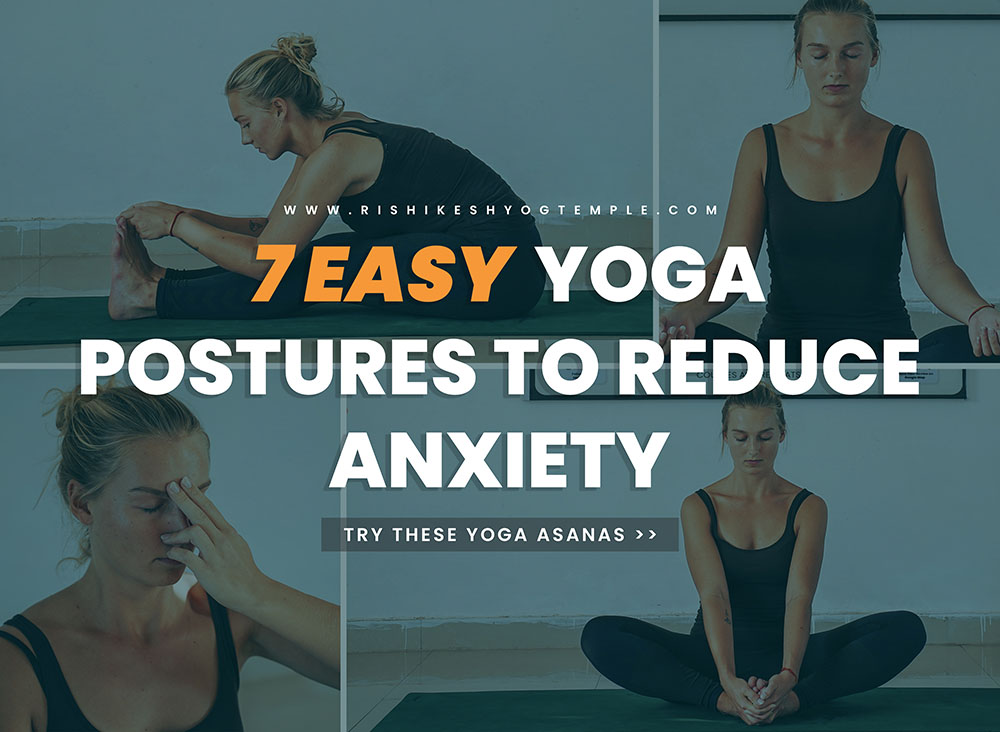
Yoga Postures to Reduce Anxiety
Anxiety is a problem that can occur to people at any age. It has now become a mental disorder but many of us are still...
Read More -
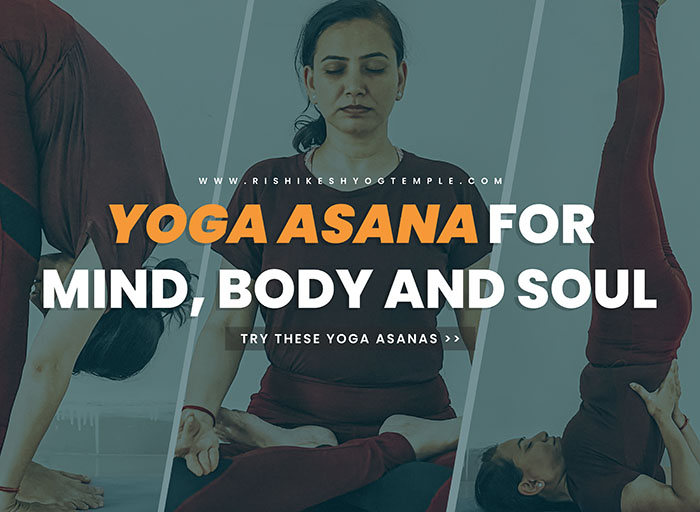
Yoga Poses for Beautifying Body, Calming Mind
Yoga originating from ancient India is a spiritual practice for physical and mental wellness. The goal of yoga is to achi...
Read More -
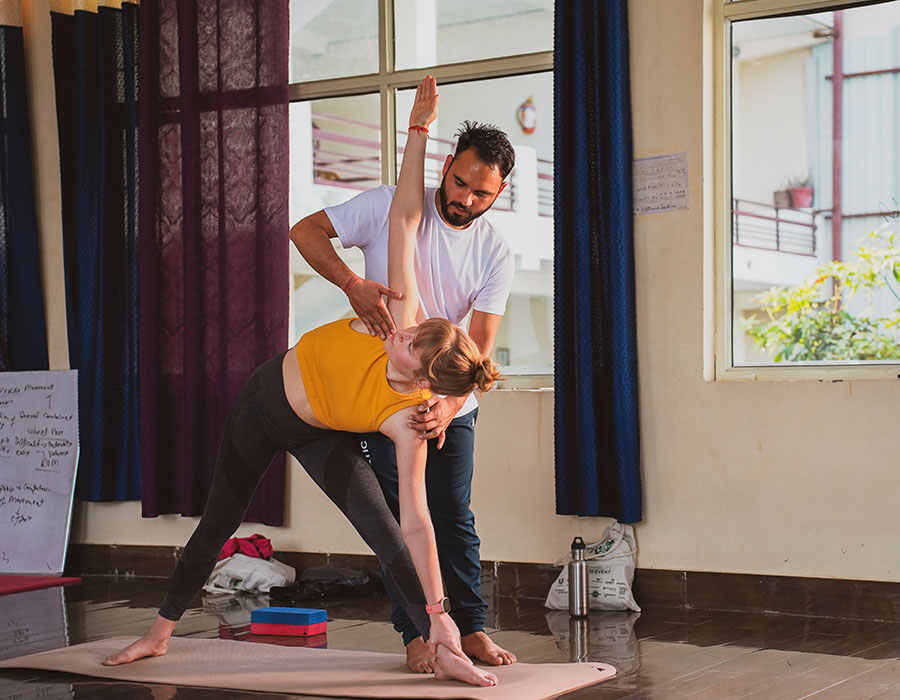
How to Start Yoga Teacher Training in 2023?
In the last two or three years, the world had faced many adverse situations. The cases of silent heart attacks also increase...
Read More -
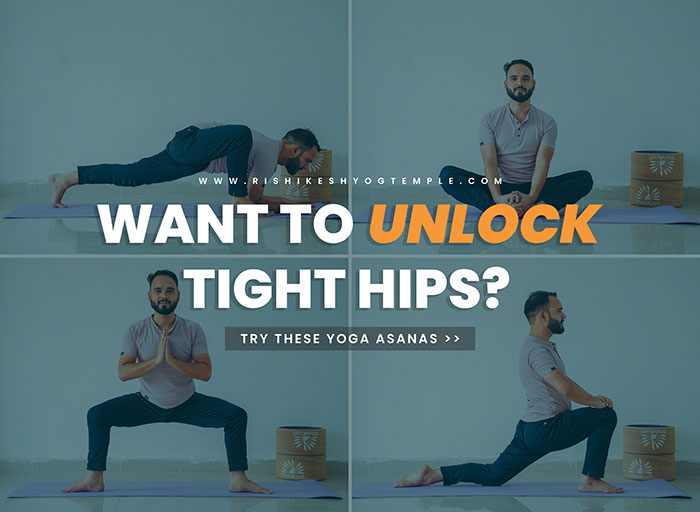
Hip Opening Yoga Poses to Unlock the Tight Hips
Hip openers are an essential part of a strong and balanced yoga practice. While Hip Opening Yoga poses have many great benefits...
Read More -
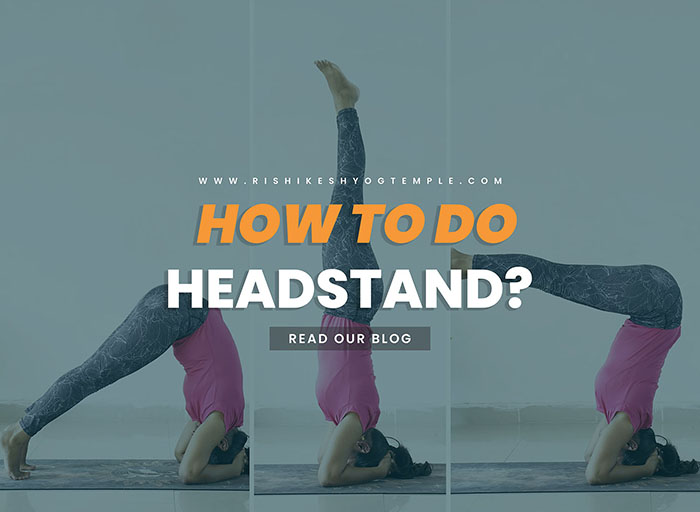
Complete Guide To Headstand (Benefits/Preparation)
Headstand or Sirsasana is known as the king of Asanas. This is an advanced yoga inversion. This posture involves balance...
Read More
